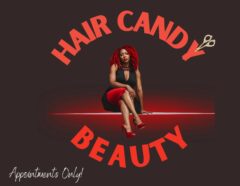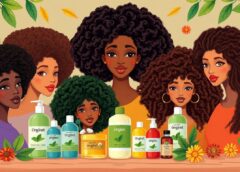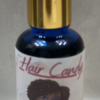Human hair growth is all about cycles. Hair doesn’t just sprout out and stay there indefinitely. Nope, it’s got a plan—actually, a cycle. The hair growth cycle has three phases: anagen, catagen, and telogen.
Anagen is the growth phase. You can think of it as the superstar stage where the hair is doing its thing and growing. Depending on genetics, it could last from a couple of years to up to seven years. Then comes catagen, a bit of a breather where growth slows and the hair follicle renews.
Telogen is the resting stage, where the hair chills before eventually shedding. On average, we lose 50 to 100 hairs daily. You can even give yourself a high five next time you see a few strands in your brush—it’s totally normal!
Now, what’s behind this whole cycle? Mostly, it boils down to genetics, hormones, and sadly, age. We all have our own hair growth blueprint from the get-go, thanks to our folks. Hormones like androgens can spice up or slow down the growth. And let’s be real, age can sometimes make hair less… lush.
Quick heads-up on hair growth myths: Cutting your hair won’t make it grow faster. That’s an old wives’ tale. But keeping it trimmed can help avoid split ends, which is kind of awesome for maintaining its thickness. And those miracle cures promising Rapunzel locks overnight? Don’t fall for it—they’re the stuff of fairy tales.
Nutritional Foundations for Stronger and Thicker Hair
When it comes to hair health, what you eat can play a big role. Your body needs the right mix of nutrients to keep those locks looking luscious. Biotin, a B-vitamin, is often in the spotlight for its role in hair growth. Think nuts, seeds, and eggs if you want to up your biotin game.
Don’t forget Vitamin D. It’s not just for your bones; it’s essential for your hair follicles. Just a little sun exposure can do the trick, or you can opt for fatty fish like salmon. Zinc shouldn’t be left out either, as it helps with cell reproduction that impacts hair growth. Snacking on pumpkin seeds or heading for some spinach can cover you here.
Protein is the building block of hair. Without enough of it, your hair might take a hit, becoming weak and prone to breakage. So make sure your diet has enough lean meat, fish, or even plant-based proteins if that’s your jam.
Eating the right stuff can be enjoyable too. Superfoods like avocados, berries, and sweet potatoes not only taste great, but they also bring a host of nutrients to the table that support hair health. They’re like nature’s multi-vitamins, helping your body from the inside out!
Good hair days start with good food. A balanced diet isn’t just about maintaining a trim waistline; it’s about giving your hair the love it deserves from the inside. So mix things up on your plate to keep those tresses thriving!
Adopting a Holistic Hair Care Routine

Your journey to lush, thick hair isn’t all about what’s on your plate. It’s also about how you care for it day-to-day. Choosing the right hair products might feel like finding a needle in a haystack, but here’s a tip: Check out the ingredients. Go for sulfate-free shampoos and conditioners that are gentle on your strands. Harsh chemicals? Just say nope.
Scalp health gets overlooked sometimes, but it’s the foundation for everything above it. Keeping the scalp clean and nourished is a must. Think of it as the soil for your hair. Regular but not overwashing, and massaging oils like tea tree or coconut oil into your scalp now and then, can help boost circulation and treat dryness or dandruff.
Stress can also take a toll on your hair. Incorporating relaxation techniques like yoga or meditation into your routine not only boosts your mood but can help keep stress-related hair issues at bay. It’s about finding that zen for both your mind and your mane.
There’s always the question of how often to wash and style your hair. Over-washing can lead to dry, brittle hair, while under-washing might not be ideal for scalp health. It’s a balance, but a gentle schedule is usually your best bet. If in doubt, listen to your hair—it knows how often it likes a wash.
Exploring Advanced Treatments and Natural Remedies

When it comes to hair growth treatments, there’s no one-size-fits-all solution. Over-the-counter products like minoxidil can be a good starting point for folks looking to stimulate hair growth. It’s all about consistency with these treatments, and results might take a few months, so patience is key.
Professional treatments are another avenue to explore for those wanting a more intensive approach. Low-Level Laser Therapy (LLLT) is one option—it’s non-invasive and works to invigorate the scalp and improve circulation. Microneedling, often combined with topical solutions, aims to boost hair density by promoting collagen production.
Natural remedies offer alternatives for those preferring something gentler and closer to home. Essential oils like rosemary or peppermint are popular choices, often mixed with carrier oils and massaged into the scalp. Aloe vera and onion juice are another two home-based remedies that some people swear by for their soothing and stimulating properties.
Knowing when to seek professional help is important. If you’re seeing more significant hair loss or your efforts aren’t yielding the desired results, a dermatologist or trichologist can provide a deeper understanding of your hair health and suggest tailored treatments. Sometimes expert insight can make all the difference in your journey to healthier hair.










